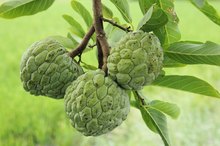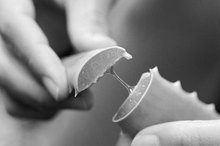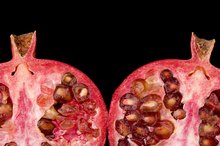What does fact checked mean?
At Healthfully, we strive to deliver objective content that is accurate and up-to-date. Our team periodically reviews articles in order to ensure content quality. The sources cited below consist of evidence from peer-reviewed journals, prominent medical organizations, academic associations, and government data.
- The Linus Pauling Institute: Saponins: Surprising Benefits of Desert Plants
- Archives of Pharmaceutical Research: Hypocholesterolemic Property of Yucca Schidigera and Quillara Saponaria Extracts in Human Body
- Archives of Pharmaceutical Research: Hypocholesterolemic Property of Yucca Schidigera and Quillara Saponaria Extracts in Human Body
The information contained on this site is for informational purposes only, and should not be used as a substitute for the advice of a professional health care provider. Please check with the appropriate physician regarding health questions and concerns. Although we strive to deliver accurate and up-to-date information, no guarantee to that effect is made.
How to Juice a Yucca
Juice of the yucca plant is used for health and hygiene purposes. Native to warm, arid regions of North and Central America and the West Indies, Yucca schidigera is distinguished by its natural saponin properties for reducing cholesterol, as well as other natural health remedies 2. Used by natives for centuries as a mild shampoo and scalp treatment as well as a treatment for arthritis pain, yucca juice continues to enjoy popularity for health benefits. Cold press is a preferred method to obtain juice from yucca stems.
Juicing Methods
Juicing methods include cold press, twin-gear, centrifugal and masticating. Cold press juicing involves running plant material through a hydraulic press in which the material is squeezed and filtered with a sieve. Twin-gear juicers work similarly to the beaters of a mixer, with gears rotating toward each other, crushing and grinding plant material to extract juice. A centrifugal juicer has a rapidly rotating blade that breaks up plant material, which is strained to obtain the juice. Masticating juicers operate similarly to centrifugal juicers, but more slowly.
- Juicing methods include cold press, twin-gear, centrifugal and masticating.
- A centrifugal juicer has a rapidly rotating blade that breaks up plant material, which is strained to obtain the juice.
Juicing Methods Comparison
Nutritional Facts of Dole Pineapple Juice
Learn More
Centrifugal juicing involves generation of heat during operation of the juicer, which kills many enzymes and produces juice with lower nutrient content than non-centrifugal juicers. Juice produced through the centrifugal juicing method also has a shorter shelf life because of oxidation during the juicing process. Cold press, non-centrifugal juicing yields more juice that lasts up to 72 hours without a preservative. Non-centrifugal juicing also creates less foam, an important factor when juicing yucca because of its saponin properties that can lead to profuse, sustained foam.
- Centrifugal juicing involves generation of heat during operation of the juicer, which kills many enzymes and produces juice with lower nutrient content than non-centrifugal juicers.
Preparation
Use the flowering stems and trunk of the yucca plant for juicing. Fleshy stems are washed and cut into small enough pieces to fit through the hopper of the juicer. Pure water may be added in small quantities to aid extraction of the juices and nutrients from the plant fiber. Follow instructions supplied with your juicer.
- Use the flowering stems and trunk of the yucca plant for juicing.
- Fleshy stems are washed and cut into small enough pieces to fit through the hopper of the juicer.
Cautions
What Are the Benefits of Eating Limes?
Learn More
Saponins are steroidal compounds found abundantly in Yucca schidigera. Steroidal saponins are toxic. However, although fish and certain animals are highly susceptible to the toxicity of saponins, they tend to pass through the human digestive tract, precipitating beneficial effects such as lowering cholesterol, yet they are not absorbed. Ask your doctor before making dietary changes such as adding yucca juice to your diet.
- Saponins are steroidal compounds found abundantly in Yucca schidigera.
Related Articles
References
- The Linus Pauling Institute: Saponins: Surprising Benefits of Desert Plants
- Archives of Pharmaceutical Research: Hypocholesterolemic Property of Yucca Schidigera and Quillara Saponaria Extracts in Human Body
- Cheeke, P.; Piacente, S.; and Oleszek, W. Anti-inflammatory and anti-arthritic effects of Yucca schidigera: a review. J Inflamm (Lond). 2006 Mar 29;3:6. DOI: 10.1186/1476-9255-3-6.
- Kim, S.; Park, S.; K., Kang, S. et al. Hypocholesterolemic property of Yucca schidigera and Quillaja saponaria extracts in human body. Arch Pharm Res. 2003;26(12):1042-46. DOI: 10.1007/BF02994756.
- Olas B, Wachowicz B, Stochmal A, Oleszek W. "Inhibition of oxidative stress in blood platelets by different phenolics from Yucca schidigera Roezl. bark." Nutrition. 2003 Jul-Aug;19(7-8):633-40.
- VanderJagt TJ, Ghattas R, VanderJagt DJ, Crossey M, Glew RH. Comparison of the total antioxidant content of 30 widely used medicinal plants of New Mexico. Life Sci. 2002 Jan 18;70(9):1035-40.
Writer Bio
For Judy Kilpatrick, gardening is the best mental health therapy of all. Combining her interests in both of these fields, Kilpatrick is a professional flower grower and a practicing, licensed mental health therapist. A graduate of East Carolina University, Kilpatrick writes for national and regional publications.









